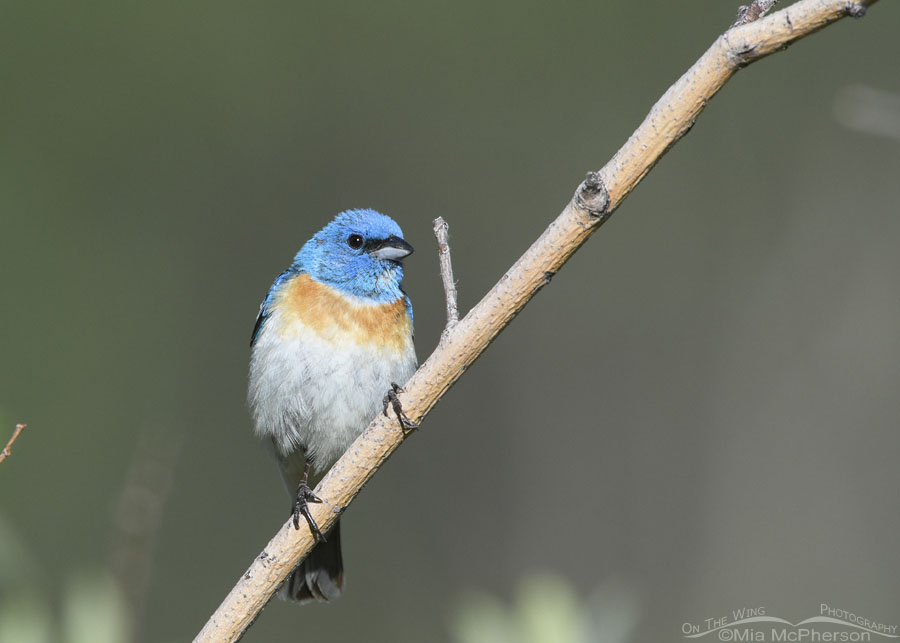 Male Lazuli Bunting perched on a willow branch – Nikon D500, f7.1, 1/1600, ISO 640, Nikkor 500mm VR with 1.4x TC, natural light
Male Lazuli Bunting perched on a willow branch – Nikon D500, f7.1, 1/1600, ISO 640, Nikkor 500mm VR with 1.4x TC, natural light
Late last week I headed up into the Wasatch Mountains to look for birds in cooler temps and had a great time photographing two bunting species before 8 am. First a male Lazuli Bunting in his finest breeding plumage landed on a willow branch close to where I had parked next to the road.
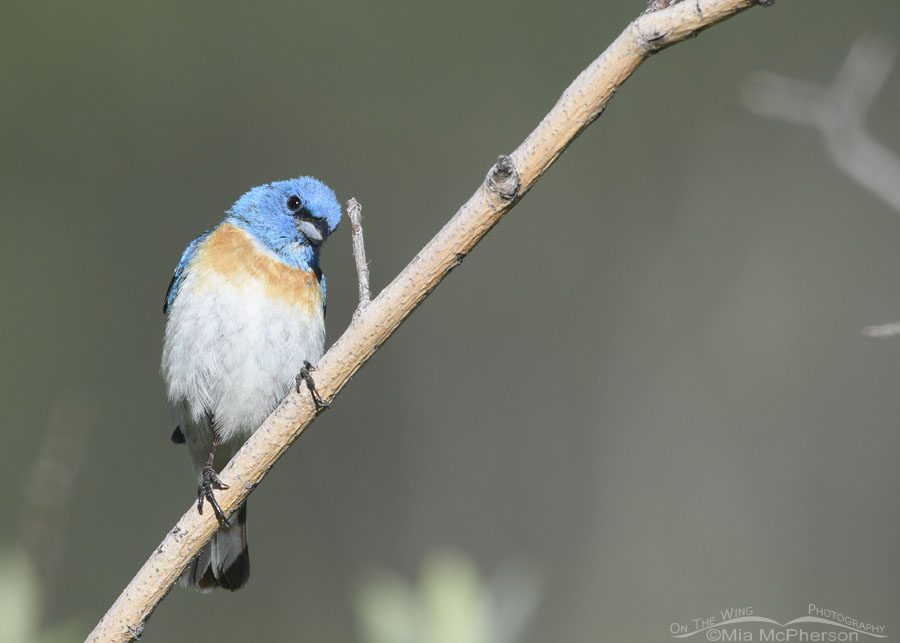 Inquisitive adult male Lazuli Bunting – Nikon D500, f7.1, 1/1600, ISO 640, Nikkor 500mm VR with 1.4x TC, natural light
Inquisitive adult male Lazuli Bunting – Nikon D500, f7.1, 1/1600, ISO 640, Nikkor 500mm VR with 1.4x TC, natural light
His brilliant blue head dazzled my eyes as I looked at him through my viewfinder and fired off a long burst of images. The sound of my camera seemed to draw his attention towards me.
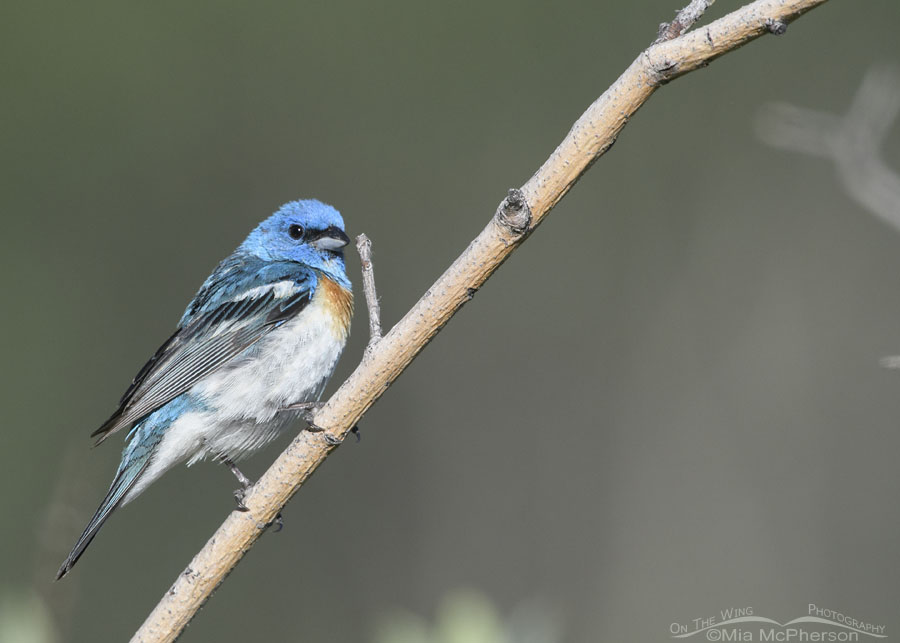 Summer male Lazuli Bunting – Nikon D500, f7.1, 1/1600, ISO 640, Nikkor 500mm VR with 1.4x TC, natural light
Summer male Lazuli Bunting – Nikon D500, f7.1, 1/1600, ISO 640, Nikkor 500mm VR with 1.4x TC, natural light
When the male Lazuli Bunting turned on the branch he gave me wonderful views of the blue feathers on his back, wings, rump and tail feathers too.
A few seconds after I took this photo the male bunting lifted off from the willow branch with his back to me.
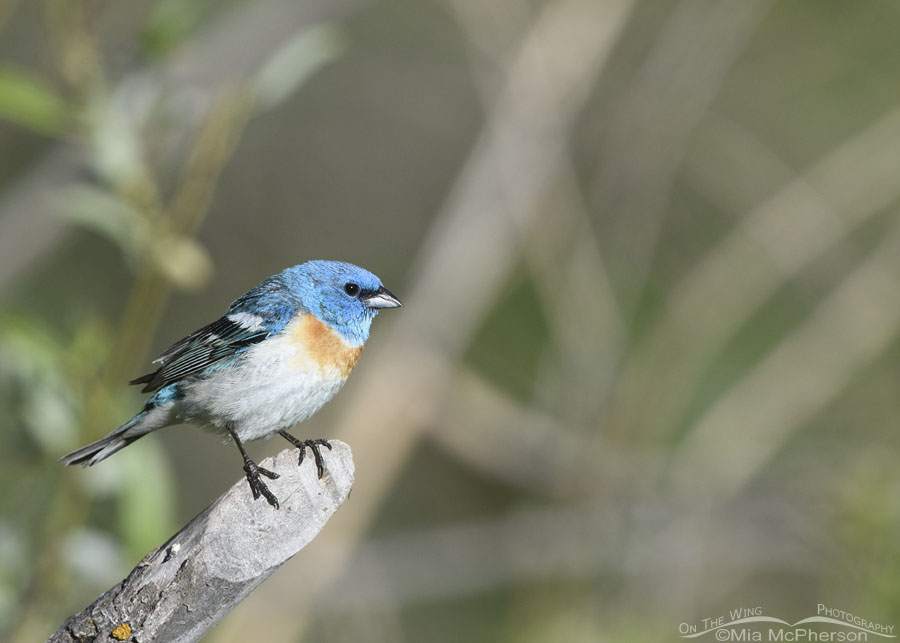 Male Lazuli Bunting perched on a big stick – Nikon D500, f7.1, 1/2000, ISO 640, -0.3 EV, Nikkor 500mm VR with 1.4x TC, natural light
Male Lazuli Bunting perched on a big stick – Nikon D500, f7.1, 1/2000, ISO 640, -0.3 EV, Nikkor 500mm VR with 1.4x TC, natural light
I was delighted and surprised when the Lazuli Bunting landed out in the open on a big stick in front of me. The cut edge of this stick was left by the sharp teeth of the beavers in this area.
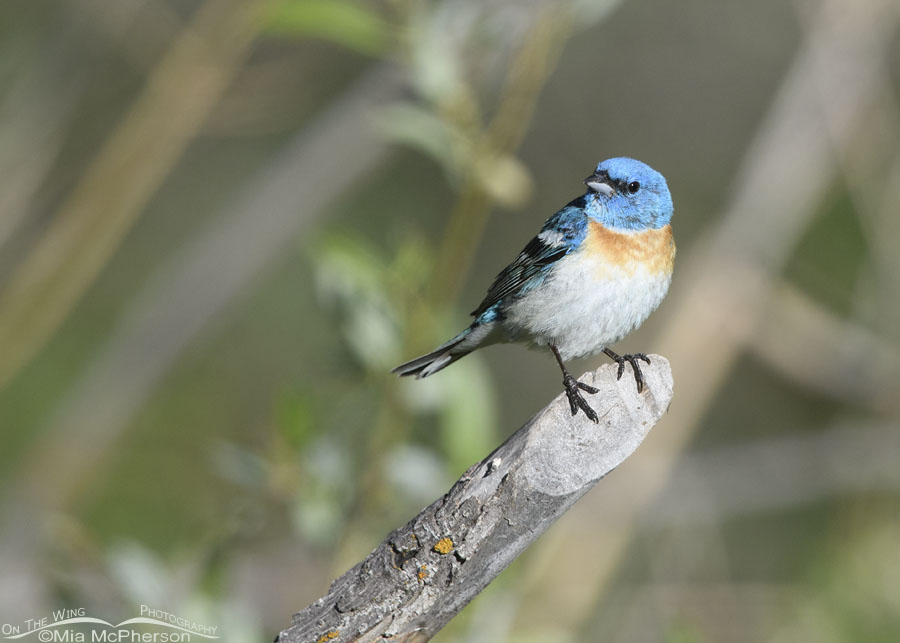 Lazuli Bunting male high in the Wasatch Mountains – Nikon D500, f7.1, 1/2000, ISO 640, -0.3 EV, Nikkor 500mm VR with 1.4x TC, natural light
Lazuli Bunting male high in the Wasatch Mountains – Nikon D500, f7.1, 1/2000, ISO 640, -0.3 EV, Nikkor 500mm VR with 1.4x TC, natural light
I fired off another long burst of images as the male bunting perched on the stick. The light I had at the time was terrific and helped to show off this beautiful bunting’s colorful plumage.
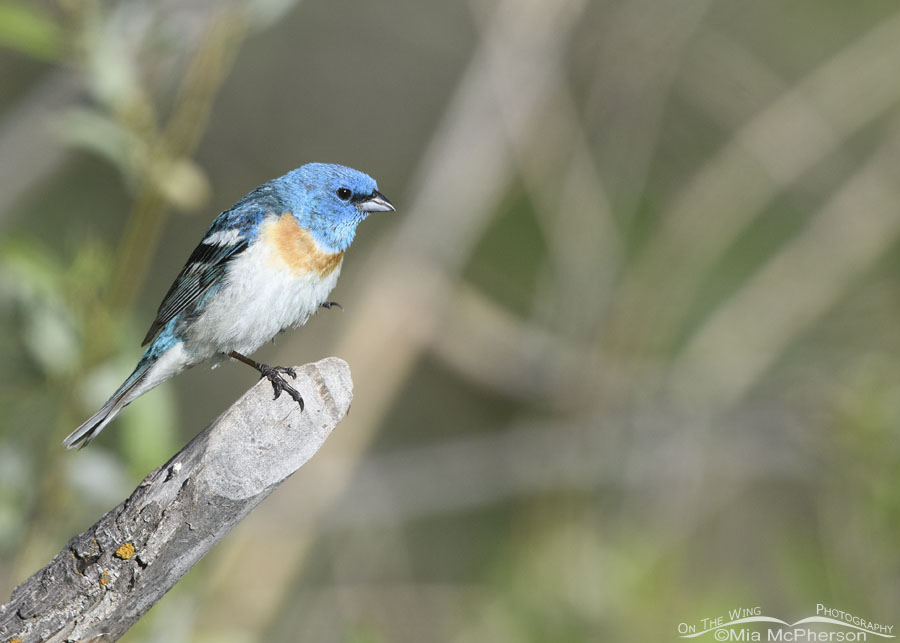 Male Lazuli Bunting perched on one foot – Nikon D500, f7.1, 1/2000, ISO 640, -0.3 EV, Nikkor 500mm VR with 1.4x TC, natural light
Male Lazuli Bunting perched on one foot – Nikon D500, f7.1, 1/2000, ISO 640, -0.3 EV, Nikkor 500mm VR with 1.4x TC, natural light
As I photographed this male Lazuli Bunting I could hear the song of another bunting species. It was a song I vividly recalled from many years prior when I used to take my sons out to find buntings back east. A song I heard often in my garden in Virginia.
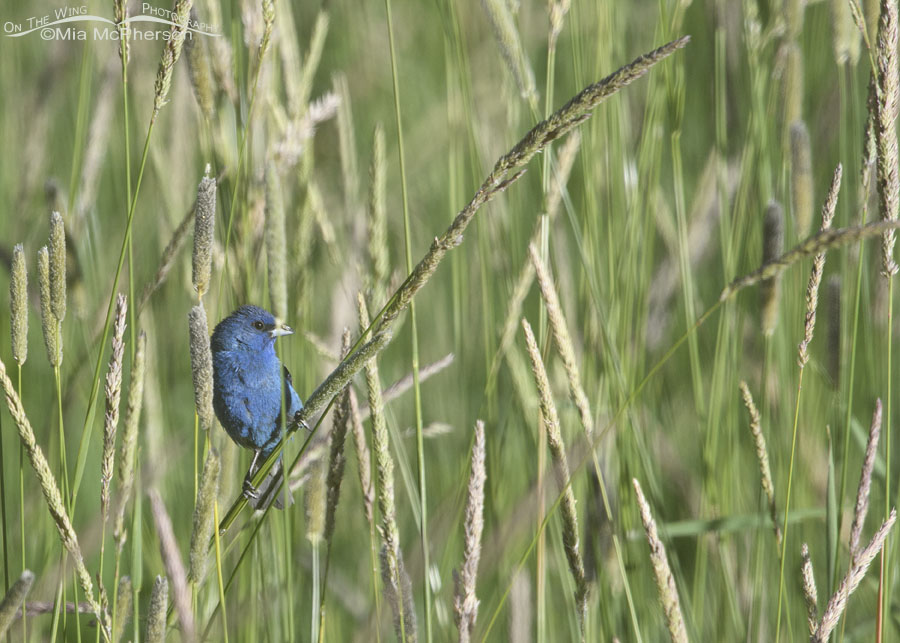 Indigo Bunting male feeding on grass seeds – Nikon D500, f7.1, 1/1600, ISO 640, -0.3 EV, Nikkor 500mm VR with 1.4x TC, natural light
Indigo Bunting male feeding on grass seeds – Nikon D500, f7.1, 1/1600, ISO 640, -0.3 EV, Nikkor 500mm VR with 1.4x TC, natural light
That song I kept hearing was from a male Indigo Bunting, a bunting species that is uncommon to northern Utah. I had seen and photographed this male two days prior to when these images were taken but my photos on that day were from a very long distance and the bunting was mostly hidden in foliage.
When I took this image of the Indigo Bunting I had grasses between my lens and the bird. I could see the rich blue plumage of his plumage though the veil of grasses. The Indigo sang even as he plucked seeds from the grasses and ate them.
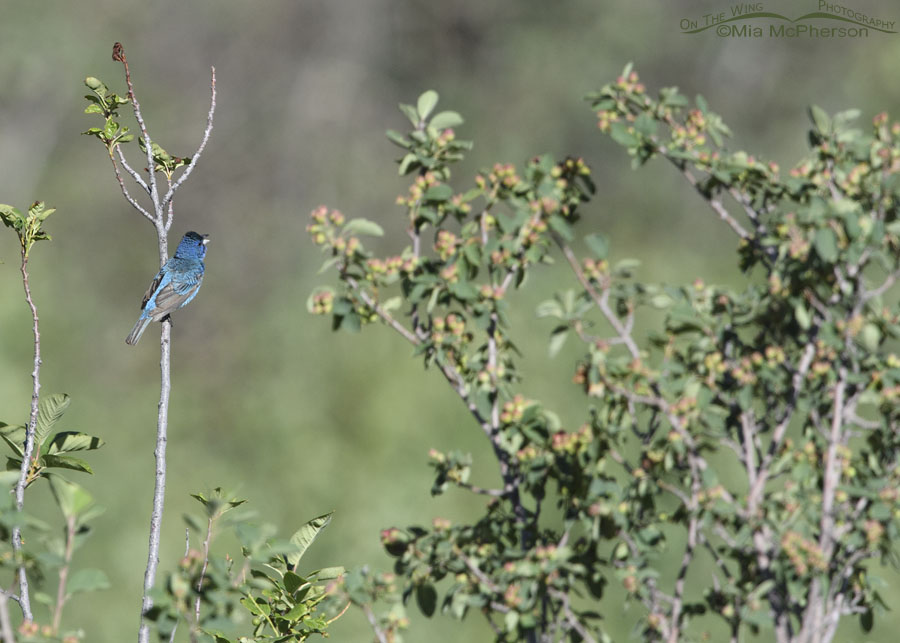 Singing male Indigo Bunting in the Wasatch Mountains – Nikon D500, f7.1, 1/1600, ISO 640, -0.3 EV, Nikkor 500mm VR with 1.4x TC, natural light
Singing male Indigo Bunting in the Wasatch Mountains – Nikon D500, f7.1, 1/1600, ISO 640, -0.3 EV, Nikkor 500mm VR with 1.4x TC, natural light
The song of this bunting was a delight to my ears and when he left the grasses he flew across the creek and sang out in the open.
I was so happy to see this Indigo Bunting twice last week. Seeing him brought back many wonderful memories of trips into the field with my sons William and Christopher and from when they nested in our garden. What a joy.
Life is good.
Mia
Click here to see more of my Lazuli Bunting photos plus facts and information about this species. Click here to see more of my Indigo Bunting photos plus facts and information about this species.


Holy Moly! [Yes. I was born in the early 40’s.] What a terrific series of pics! The color and detail in each shot is riveting. Thanks Mia.
The lighting was perfect to capture these bunting!
Oh what a wonderful morning, oh what a beautiful day…
What a great morning, Mia! Thanks for sharing.
So pretty.
Lucky you!! I’m thrilled to have a one-bunting morning!
So lovely! Thanks for.all the work and gas you sacrificed to share them.